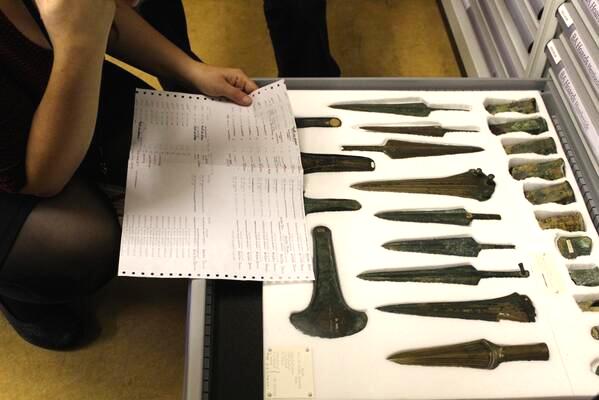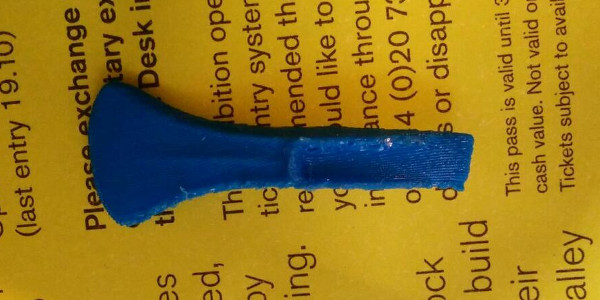The British Museum and University College London (UCL) have launched Micropasts.org – a PyBossa-powered platform which invites members of the public to become citizen archeologists. The project will create the world’s leading prehistoric metal database and just might change the way we research our collective past.
A vast collection
The Bronze Age collection at the British Museum contains over 30,000 tools and weapons discovered during the 19th and 20th centuries. Specific details of each artefact are recorded in a massive database of index cards which has been kept since 1913. The Micropasts project, led by Daniel Pett (British Musuem) and Andrew Bevan (UCL), seeks contributions to help create 3D models of these artefacts and to transcribe their associated paper records.

Photo by Micropasts – Bronze Age artefacts from the British Museum's collection.
Photo-masking
Following a revolution in 3D modelling in recent years, it is now relatively easy to create high quality 3D models of archeological artefacts using digital photographs and a process known as ‘photo-masking’.
Micropasts asks volunteers to accurately outline objects depicted in photographs so that they may be isolated from their background. High quality models may then be constructed which allow for better visualisation of the artefacts by exposing tiny differences in their dimensions and style. The models will provide new insights into how, when and where objects were made with a level of detail which may ultimately lead to new forms of archeological scholarship.
Transcription and geo-coding
The huge database of index cards at the British Museum records details about object type, location and context of discovery, as well as line drawings of each object. Contributors are asked to transcribe details from the cards in pre-determined fields and to geo-reference the object’s place of discovery.
What can be achieved?
Neil Wilkin, curator of Bronze Age collections at the British Museum, states that:
“The result [of the Micropasts project] will be the largest national database of prehistoric metal finds anywhere in the world… giving us a far more comprehensive view of our prehistoric world.”
Andrew Bevan (UCL) thinks that Micropasts is:
“… so exciting because we can potentially take it in so many directions. We plan to create more crowdsourcing applications for the platform.”
All the project’s data will be made publicly available so that anyone can use it, whether for academic and research purposes, or even to be incorporated into the on-line environment or for gaming.

Photo by Micropasts – 3D print of Bronze Age palstave modelled by Micropasts.
SciFabric’s Role
Scifabric has worked closely with the British Museum and UCL to produce a bespoke platform ideally suited to citizen archeology. Daniel Pett of the British Museum says:
“The PyBossa system has allowed the British Museum to release an amazing resource to the public and a worldwide audience. It has so much potential for citizen scientists and future developments will aid archaeologists and museum curators to tell new narratives with input from the crowd.”
What are you waiting for?
Since going live in April, Micropasts has already proved to be hugely popular. It currently has six projects running, some of which are nearing completion. So if you’ve ever dreamed of following in the foot steps of Indiana Jones, here’s your chance…